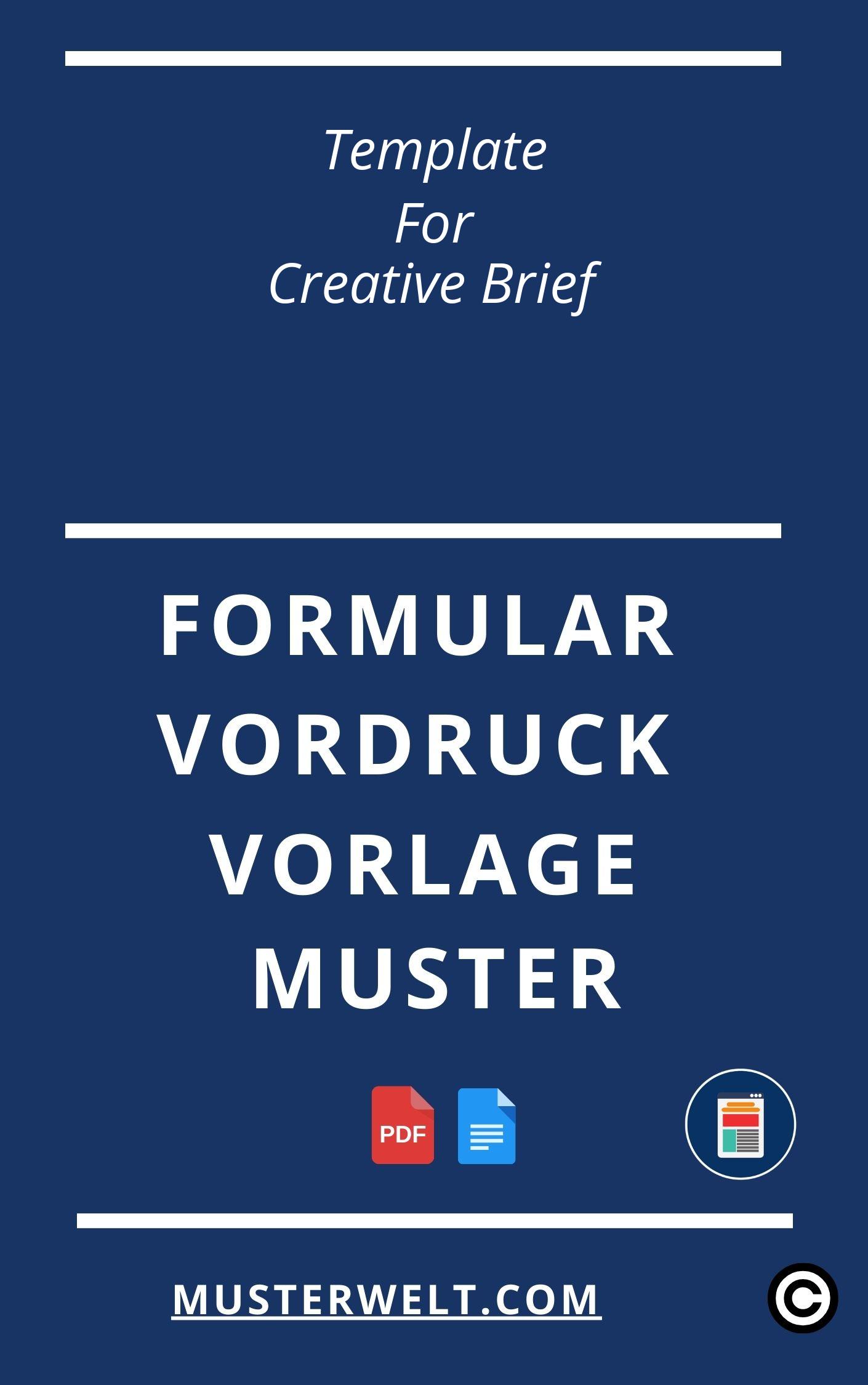Muster und Vorlage für Template For Creative Brief zur Anpassung und Erstellung – Öffnen im WORD– und PDF-Format

Vorlage Template For Creative Brief
- Punkt 1
- Punkt 2
- Punkt 3
Ende der Vorlage
Muster und Vorlage für Template For Creative Brief zur Erstellung und Anpassung im WORD– und PDF-Format
Mehr Muster und Vorlage für Template For Creative Brief
| Template For Creative Brief |
| PDF – WORD Format |
| Bewertung: ⭐⭐⭐⭐⭐ 4.73 |
| Ergebnisse – 335 |
FAQ Template for Creative Brief
1. What is a creative brief?
-
A creative brief is a document that outlines the main objectives and requirements for a creative project. It serves as a guide for the individuals or teams involved in the project to ensure that they have a clear understanding of the project’s goals, target audience, key messages, and other important details.
2. Why is a creative brief important?
-
A creative brief is important because it helps align the expectations and goals of all the stakeholders involved in a creative project. It ensures that everyone is on the same page and working towards the same objectives. It also acts as a reference point throughout the project, helping to maintain consistency and avoid misunderstandings.
3. What are the key components of a creative brief?
-
The key components of a creative brief may include:
- Project background and objectives
- Target audience
- Key messages or value proposition
- Timeline and deadlines
- Budget
- Brand guidelines and visual references
- Deliverables
- Evaluation and success metrics
4. Who should be involved in creating a creative brief?
-
Typically, a creative brief is created by the project manager, marketing team, or the client. They are the stakeholders who have a clear understanding of the project’s objectives, target audience, and requirements. However, it is important to involve all the key stakeholders to ensure that all perspectives and requirements are considered.
5. How long should a creative brief be?
-
A creative brief should be concise and to the point. Ideally, it should not exceed two pages, unless the project is complex and requires additional explanations. It is important to provide enough information to guide the creative team, but avoid overwhelming them with unnecessary details.
6. Is it necessary to update the creative brief as the project progresses?
-
Yes, it is recommended to update the creative brief as the project progresses. Changes and new insights may arise during the creative process, and it is important to ensure that all stakeholders are aware of them. Regularly reviewing and updating the creative brief helps to maintain alignment and avoid miscommunication.
7. How should the creative brief be presented?
-
The creative brief can be presented in a written format, either as a document or an email, or it can be presented in a visual format, such as a slide presentation or infographic. The format should be chosen based on the preferences of the stakeholders and the complexity of the project.
8. What are some common mistakes to avoid when creating a creative brief?
-
Some common mistakes to avoid when creating a creative brief are:
- Being too vague or unclear about the project objectives
- Excluding important stakeholders from the brief creation process
- Not providing enough background information
- Overloading the brief with unnecessary details
- Not updating the brief as the project progresses
9. How can a creative brief be used as a reference during the project?
-
The creative brief can be used as a reference during the project in the following ways:
- For creative team members to ensure that their work aligns with the project objectives
- As a guide for decision-making throughout the project
- As a reference point for reviewing and approving deliverables
- To evaluate the success of the project against the initial objectives
10. Are there different types of creative briefs?
-
Yes, there are different types of creative briefs that may vary depending on the industry and the specific project. Some common types of creative briefs include brand briefs, advertising briefs, website briefs, and social media briefs. The content and format of the brief may differ based on the requirements of each type of project.
11. Can a creative brief be used for multiple projects?
-
Yes, a creative brief can be used as a template for multiple projects, especially if the projects have similar objectives and requirements. However, it is important to review and customize the brief for each project to ensure that it accurately reflects the specific requirements and goals.
12. What should be done with the creative brief after the project is completed?
-
After the project is completed, the creative brief can serve as a record of the project’s objectives, process, and outcomes. It can be used as a reference in future projects, as a learning tool for improving future briefs, or as a basis for evaluating the project’s success and impact.
Conclusion:
A well-crafted creative brief is essential for the success of any creative project. It helps align the expectations and goals of all the stakeholders, provides guidance to the creative team, and serves as a reference throughout the project. By addressing the frequently asked questions mentioned above, this FAQ template aims to assist in the creation of effective and comprehensive creative briefs.